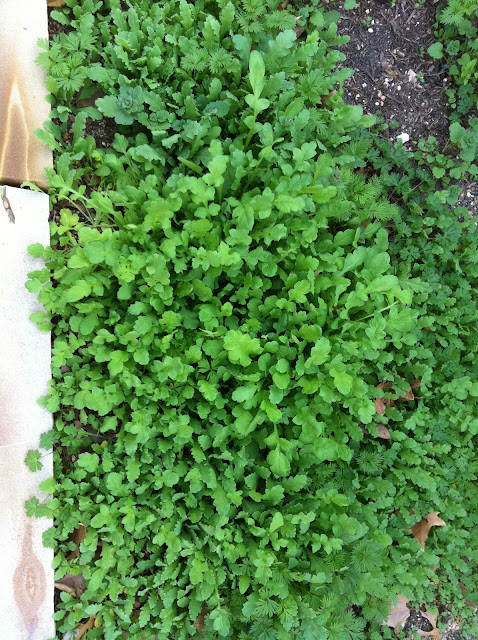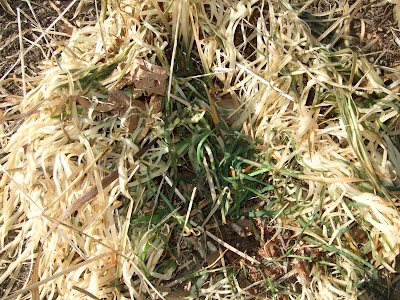I know it's been months since I posted, and I have no excuse, but it was a cold and dreary winter, and garden-wise there wasn't much going on except for the winter vegetables. The lettuces did spectacularly this year, and I was practically begging neighbors and friends to come and get some. Here's the final carrot harvest so I could make way for the tomatoes and peppers.
The 'good' days to get out and cut back dead stuff were few and far between--it was either raining or too cold. Okay, whining is over, and spring has come and gone. A lot of time was spent simply cleaning up and looking for what was dead or alive. Alive won.
The agaves did well, except for the ornithobroma, which croaked. Amazingly, the manfreda undulata "Chocolate Chips" had just a few little tip-burns, and on April 6 I found this bloom stalk shooting up. (Note the size of the mullein next to it-more on that later.)
Only 9 days later, it looked like this!
Today it measures 8 feet. YuccaDo says it usually blooms in June, but it popped out last week. More weird than impressive.

Cold weather and rain produced other miracles, such as these profuse 2 year old petunias in March...
iris at least a foot taller than ever before in April...
what had been 3 little lambs ears exploding over the gravel path (I was always told they hate to be wet)...
the best my Jerusalem sage has ever bloomed...
and a spectacular mullein that I didn't know would grow this big, and that I had to remove since it was covering up other plants.
Another little miracle was the pair of Carolina wrens that decided in mid-April to build a nest in this gourd hanging from the back porch rafter.
For 2 weeks the 'dad' bird constantly brought food to 'mom' on the nest. It became obvious that the eggs had hatched when one day I noticed that both mom and dad were bringing food to the nest--it was so cute to watch them take turns, sometimes both arriving at the same time and one waiting patiently on the fence top while the other one poked bugs into the invisible hungry mouths. About 2 weeks after the feeding began, both birds one morning became very animated, hopping up and down on the porch railing under the nest and singing loudly as if to say, "Okay kids, it's time to fly." By this time I had begun to see 1 or 2 little heads peeking out from the nest hole. After about 20 minutes of encouragement, the first one ventures out but isn't sure if he wants to try it.
His first flight is about 6 feet to the fence.
And within the next 10 minutes all 5 babies had taken wing, with mom and dad following them around the yard anxiously and noisily. The birds got very used to me and I felt privileged to have been a bird 'auntie.'
Finally, as one who is constantly on the hunt for leaf-footed bugs on my tomatoes, I have to share a discovery with you. One morning on a pink poppy plant that had grown up in the patio I found adult, juvenile and hatchling leaf-footed bugs and promptly killed them. A couple of hours later I looked again and there were more hatchlings--same process. I've probably eliminated about 100 of these bugs on the poppy plant in the last week. Next year I will plant poppies much closer to where the tomatoes are growing to take advantage of this new-found trap!












































